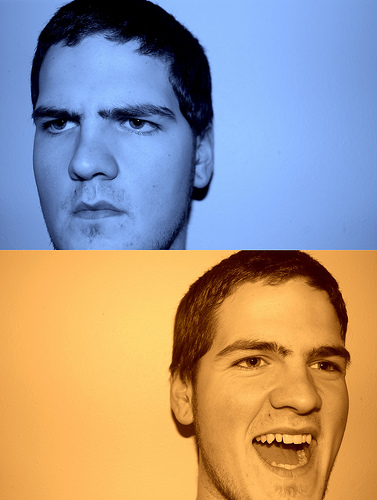 “Oh there is a word for that!” is a reaction I often have when I make a discovery about something that I intuitively sensed was true but had no way of describing it. Because I had no known description, my sense of truth was accompanied by doubt. It is interesting that when we have a word and even better some scientific evidence to back up how we are feeling then our doubt disappears and we are empowered to take actions to be more effective.
“Oh there is a word for that!” is a reaction I often have when I make a discovery about something that I intuitively sensed was true but had no way of describing it. Because I had no known description, my sense of truth was accompanied by doubt. It is interesting that when we have a word and even better some scientific evidence to back up how we are feeling then our doubt disappears and we are empowered to take actions to be more effective.
Here is an example (since you may be wondering what in the world I am talking about). I read about “mood congruity” and prefrontal cortices in Steven Johnson’s book, Mind Wide Open, Your Brain and the Neuroscience of Everyday Life. Mood congruity was an important discovery from a team of researchers, lead by Antonio Damasio, looking at brain chemistry using PET (Positron Emission Tomography) scans. What they found was that our brains record feelings about events from our past; thinking about these events triggers memories of other events that caused the same feelings. If the event caused negative emotions (fear, sadness, frustration) then similar events will be triggered. The opposite is also true, if the event caused positive emotions (joy, happiness, gratitude) then similar positive event memories will be triggered. The other key discovery was that negative emotions decrease the activity in the prefrontal cortices of the brain, while positive emotions increase the activity. “Prefrontal cortical activity is a strong predictor of idea generation and overall liveliness of thought. When you’re thinking on your feet, when you’re full of ideas, your frontal lobes are firing on all cylinders.”
 Aha! No wonder when I am feeling a bit down I recall those memories of times when I was down or sad and I have a heck of a time trying to come up with ideas on how to resolve an issue. It is because of my brain’s natural mood congruity and lack of activity in my prefrontal cortices! Steve Johnson explains in his book that when he learned of this research it eliminated his perception of his intelligence decreasing on top of his feeling blue and this in turn reduced his length of time feeling blue. It also helps explain why sometimes “I am on a roll” with positive emotions and great ideas and why it is so important to cultivate positive emotions and memories.
Aha! No wonder when I am feeling a bit down I recall those memories of times when I was down or sad and I have a heck of a time trying to come up with ideas on how to resolve an issue. It is because of my brain’s natural mood congruity and lack of activity in my prefrontal cortices! Steve Johnson explains in his book that when he learned of this research it eliminated his perception of his intelligence decreasing on top of his feeling blue and this in turn reduced his length of time feeling blue. It also helps explain why sometimes “I am on a roll” with positive emotions and great ideas and why it is so important to cultivate positive emotions and memories.
I am not encouraging denial of negative emotions; that would be like denying I have a bad cold and just pushing forward with no change in my actions. Take some time to work through the sadness and focus on actions that do not require creation of new ideas (like filing or cleaning out your in-box). Possibly get some extra rest and relaxation or exercise to assist in changing your brain chemicals and then when you feel like you are moving to the positive emotions your brain will naturally start recalling all the positive memories and you will be ready to tackle the tasks that require creative ideas.
So, what does this have to do with coaching? Well, it is a beautiful thing when my coach helps me see a new perspective or become aware of a scientific basis and this eliminates my self doubt. Also, sometimes it takes a coach’s brain to pull my brain forward into my prefrontal cortices. My coach does this by reminding me of positive experiences and successes that my brain does not see due to mood congruity.
Think of a time when you were “firing on all cylinders” and felt full of great ideas; were you full of positive emotions? And when you were frustrated, scared, or angry: were you able to think well? Please share your insights in a comment.
photo credits: Calamity Meg, Siege N. Gin